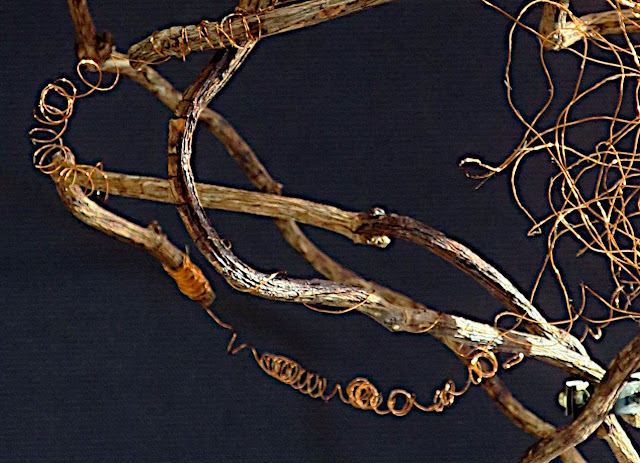This week I set my Geelong students the exercise of making a freestyle ikebana arrangement using Australian native materials. Sometimes native materials can be difficult to use in ikebana. For example eucalyptus leaves often hang and many common flower plants are rather sparse looking so that making a mass can be difficult.
Christine used Kangaroo paw as her main subject and deliberately chose the curving stem to create a space that extends the ikebana. She also chose to use four different materials for colour and textural contrast.
Maureen has used two particularly strong pink Grevillea flowers from the garden of an old friend and former neighbour. Maureen has removed a lot of the foliage to show the flowers and arranged them so that their slight curves move toward each other.
* * * * *
On Monday this week we were able to hold the first meeting of the Victorian Branch of the Sogetsu School of Ikebana. The exercise for the workshop was to make an ikebana arrangement of 'Mass and Line'. The planned presenter was unable to attend and Shoso Shimbo took on the task at short notice.
However, if you look very closely at the tip you can make out a groove with tiny margins that are the vestigial leaves.
On my way home from the evening class in Geelong, as I came around a corner, I was confronted by this sight.
This link will take you to the Victorian Branch website with other photos from the workshop.
Greetings from Christopher
27th February 2021



































